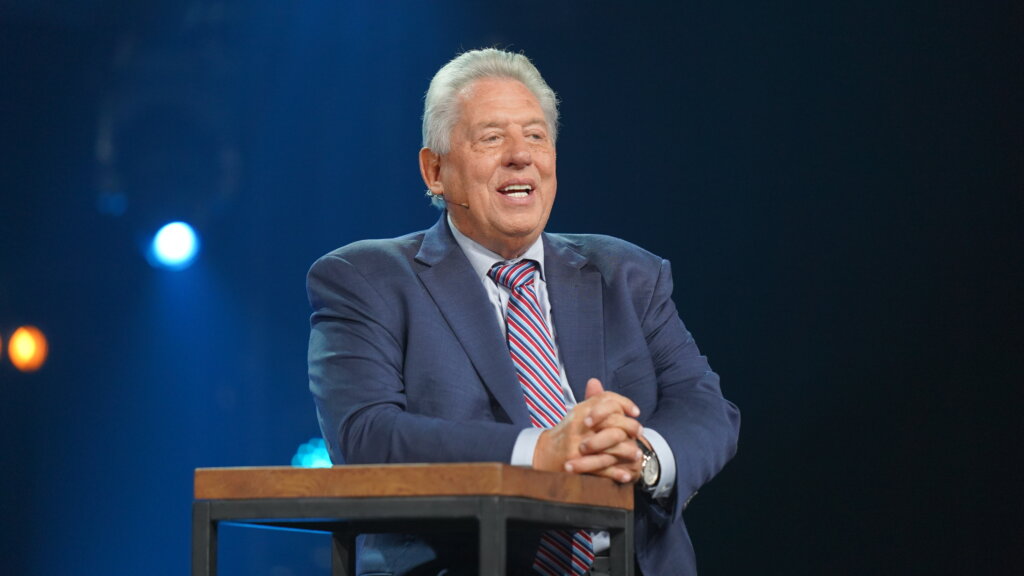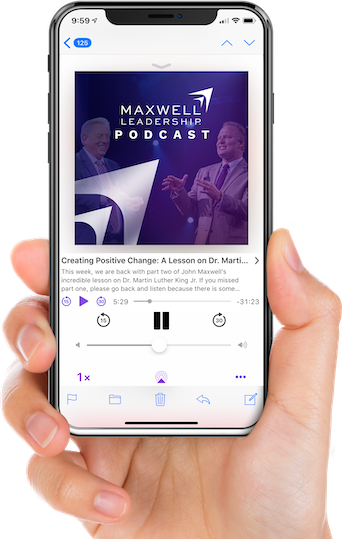The 5 Characteristics of Communication That Connects

When people ask me what I’ve experienced personally over the last few years, my answer is simple: I’m leadership sad. Why? Because I’m watching leaders live beneath their possibilities by dividing rather than uniting others.
The mode of operation for any leader should be to bring people together, not divide them. Great leaders divide their enemies and unite their friends. But when I look around, it seems like we are doing exactly the opposite.
I’m leadership sad, but I’m not leadership hopeless. I see value in every person. I believe it’s possible for anyone to learn how to lead well, even in an environment that breeds division. And it all begins with communication that connects.
As leaders, we are tasked with uniting people to not only get things done, but also lead powerful, positive change in our communities and in the world.
LEADERSHIP COMMUNICATION CHARACTERISTIC #1: CLARITY
A leader who isn’t able to communicate clearly will not be a leader for long because eventually no one will be following. Before you can lead others, you must be clear about your values and vision. Values matter because they determine your integrity; good values produce thoughts, words, and deeds that align, which creates trust for those who follow you. And a clear vision points everyone in the same direction. When you know what you stand for and where you’re going, you have a greater chance to inspire people to act and become advocates for what you want to achieve.
LEADERSHIP COMMUNICATION CHARACTERISTIC #2: CONNECTION
Are you connected with your people? Do you know them? Do you spend time figuring out where they are? Great leaders are intentional about finding their people before they lead them. You must go after your people. You can’t expect them to come to you. If you’re not naturally gifted at connecting with others, there are two simple practices you can start tomorrow that will do more to connect you with your team than anything else: ask them questions and then listen to their answers. Always remember—you can’t lead your people until you find them.
LEADERSHIP COMMUNICATION CHARACTERISTIC #3: COMPASSION
One of the greatest contributors to a divided society or team is the unwillingness to think about and discuss another person’s point of view. It’s a trap many people fall into. As leaders, we have to show the way we want others to go. That means demonstrating compassion. But I’m not just talking about having empathy for someone going through a hard time; I’m talking about leaders being willing to set aside their own desires and opinions to think through an issue from someone else’s perspective. Here’s what I know: we lead others well when we take time to consider life through their eyes.
LEADERSHIP COMMUNICATION CHARACTERISTIC #4: CANDOR
While compassion helps a leader understand their people, candor is what allows a leader to do what’s best for the team. Good leadership communication requires a clear understanding of reality, and a willingness to speak the hard truths when necessary. Timing is very important, of course; but a leader who is unwilling to say the right thing because it’s hard will not be leading long. The key to candor is expressing genuine concern and understanding. That’s how leaders build trust—and trust builds a team.
LEADERSHIP COMMUNICATION CHARACTERISTIC #5: COURAGE
As my good friend Dan Cathy says, “If you don’t go out on the limb, you’ll miss out on all the fruit.” Sometimes, a leader has to step out courageously in order to bring people together. In fact, it’s something we practice actively at Maxwell Leadership. Every few months, Mark Cole, our CEO, will call the entire company together for a voluntary gathering, usually with lunch provided. Once everyone has a full plate, Mark intentionally presents a topic of conversation to the group with the express purpose of listening to the team wrestle with the answer. The topics are usually hot button issues that people are discussing, either in the world or around the office, and it doesn’t take long before someone has something to say. We have a diverse team, and that diversity is reflected in the answers and perspectives that come to light during these lunches.
Mark is careful never to put his opinion into the mix, preferring instead to listen and learn. It’s a courageous move on his part—and on the part of our team—to deliberately address the issues that sometimes divide us but are often occupying a lot of space in our hearts and minds. When carefully structured well, this type of discussion also helps create a safer culture for our people. Why? Because understanding always promotes unity. Leaders should not be afraid of tension or disagreements; many times these are the very ingredients needed to promote healthy growth.
Effective communication that connects in divided times—whether in the world or just within your organization—means pulling people together, even when the world would rather pull them apart. We can’t run from this calling because everyone deserves to be led well. We must run toward it with clarity, connection, compassion, candor, and courage.
Looking for more resources?
Whether you’re looking for more on topics like this one or inspiration to fuel your leadership development and personal growth, we have you covered! Check out best-selling titles from John C. Maxwell like Everyone Communicates, Few Connect, the 25th anniversary edition of The 21 Irrefutable Laws of Leadership, and more on our online store.
Get to know our Maxwell Leadership Thought Leaders!
Did you know that Maxwell Leadership has expanded our influence through a team of seven – yes, seven! – thought leaders? From life coaching programs to top-tier, executive leadership development, our leadership experts are devoted to sparking powerful, positive change in the leaders of today and the generation of leaders to come. Get to know our Maxwell Leadership Thought Leaders and learn more about how you can book them to inspire the attendees at your next event here.







Be the first to comment on "The 5 Characteristics of Communication That Connects"